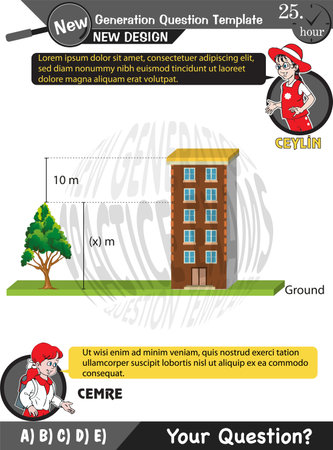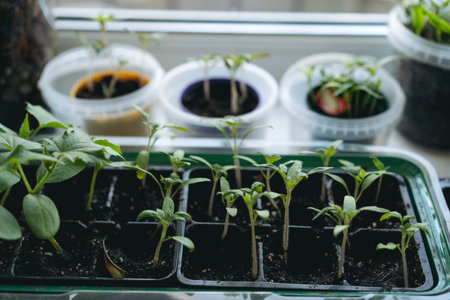Introduction to Greenhouses in the UK
There’s something quintessentially British about pottering around in a greenhouse, mug of tea in hand, as rain patters gently on the glass above. In the UK, where weather can turn from glorious sunshine to a biting chill within hours, greenhouses have become a cherished fixture in many gardens. These humble structures offer an invaluable sanctuary for both plants and gardeners, allowing us to extend the growing season, experiment with exotic varieties, and shield our prized blooms from unpredictable elements. Yet, setting up a greenhouse here is not without its challenges—be it battling persistent dampness, contending with limited winter sunlight, or navigating local planning regulations. Still, for generations, British gardeners have embraced these challenges with resourcefulness and patience, weaving greenhouse gardening into the very fabric of our national identity. Whether you’re aiming to grow juicy tomatoes or delicate fuchsias, understanding how to plan and position your greenhouse—and knowing what permissions you might need—will set you on the path to many fruitful seasons ahead.
2. Planning Your Greenhouse: What to Consider
Before you dash off to buy a greenhouse, take it from those of us whove spent years tending tomatoes and cucumbers through the British drizzle—planning is everything. A bit of foresight now can save you headaches (and money) later on. Here’s what you need to mull over:
Key Factors in Your Greenhouse Plan
Size Matters More Than You Think
Bigger isn’t always better, but too small and you’ll soon wish you had more space for your growing ambitions. Consider not just what you want to grow now, but also what you might fancy in a few years’ time. Here’s a quick guide:
| Greenhouse Size | Suitable For | Pros | Cons |
|---|---|---|---|
| 6×4 ft (Small) | Beginners, limited space | Affordable, easy to heat | Limited growing room, less flexibility |
| 8×6 ft (Medium) | Keen gardeners, families | Versatile, good for most gardens | Takes up more garden space, higher cost |
| 10×8 ft+ (Large) | Serious growers, allotments | Plenty of space for variety | Expensive, needs regular maintenance |
Budgeting Wisely: Penny Wise, Pound Foolish?
Your budget will shape your choices, but remember that skimping on quality often leads to problems down the line—warped frames or leaky panes aren’t worth the initial savings. Factor in extras like foundations, shelving, and ventilation systems; they’re not just ‘nice-to-haves’ in our unpredictable climate.
Selecting Materials: Glass or Polycarbonate?
| Material | Main Advantages | Main Drawbacks |
|---|---|---|
| Toughened Glass | Classic look, great light transmission, durable against storms when properly installed. | Heavy, can shatter if struck hard. |
| Polycarbonate Panels | Lighter weight, excellent insulation, safer around children and pets. | Slightly less transparent; can discolour over time. |
| PVC/Plastic Film | Budget-friendly and easy to install for small setups. | Less durable; needs replacing every few years. |
Tried-and-True Tips From Seasoned Gardeners
- Avoid underestimating your needs: Many regret not going bigger from the start.
- Don’t skip proper ventilation: Overheating can wipe out your plants faster than a late frost.
- Avoid cheap bases: A wobbly greenhouse is a recipe for disaster come winter winds.
- Poor orientation means poor crops: Always plan for maximum sunlight exposure (more on this later).
If you heed these bits of advice and think carefully about size, materials, and your budget before making any purchases, your greenhouse will serve you well through many a soggy British summer and beyond.

3. The Perfect Spot: Positioning and Placement
If you ask any seasoned British gardener, theyll tell you that where you put your greenhouse is half the battle won. Choosing the right spot in your garden is about more than just finding a patch of empty ground – its about creating an environment where your plants can truly thrive, come rain or shine.
Maximising Sunlight: A Classic British Concern
In the UK, sunlight can be in short supply, especially during those long winter months. Ideally, position your greenhouse so it receives as much direct sunlight as possible. The classic advice is to orient the ridge of your greenhouse east to west, which helps capture the low winter sun and keeps things cosy inside. Avoid placing your greenhouse under large trees or too close to fences and walls that might cast shadows, particularly between late autumn and early spring when every ray counts.
Shelter from the Wind: Protecting Your Investment
British weather is notorious for its blustery winds, especially if you live in an exposed area or by the coast. Wind not only cools down your greenhouse but can also cause structural damage over time. If possible, position your greenhouse where its shielded from prevailing winds – perhaps behind a hedge or a sturdy fence. Just remember to leave enough space around it for air circulation to prevent damp and mould.
Proximity to Utilities: Keeping Things Practical
Dont overlook practicality! Being close to a water source will save you endless trips with the watering can – something youll thank yourself for on those chilly mornings. If youre planning on heating or lighting your greenhouse, consider how easy it will be to run electricity safely from your home. Also, having your greenhouse within sight of your kitchen window means youll keep an eye on things and wont forget to nip out for a quick check or harvest.
In summary, choosing the right location is a blend of tradition and good old-fashioned common sense. Take a little extra time to observe your garden at different times of day and year before making a final decision – its well worth the effort in the long run.
4. Understanding UK Greenhouse Permits and Regulations
If you’re keen to put up a greenhouse in your back garden, you’ll quickly find that it’s not just a matter of buying one from the local garden centre and popping it up where you please. The UK has a particular set of rules when it comes to planning permissions, council regulations, and even listed building restrictions. Let’s take a closer look so you don’t get caught out with an unexpected letter from your local authority.
Do You Need Planning Permission?
For most folks, putting up a modest-sized greenhouse in the back garden won’t require planning permission thanks to what’s called “permitted development rights.” However, there are exceptions and it pays to check before you start laying foundations. Here’s a quick reference:
| Situation | Permission Needed? |
|---|---|
| Greenhouse under 2.5m high (within 2m of boundary) | No |
| Greenhouse over 2.5m high (within 2m of boundary) | Yes |
| Total outbuildings occupy less than 50% of garden area | No |
| Greenhouse at front of house or side on a corner plot | Yes |
| Listed building or within conservation area | Almost always Yes |
Local Council Considerations
Your local council is the first port of call for any questions about greenhouse permissions. Councils can have their own additional requirements regarding materials, distance from boundaries, and appearance—especially if neighbours might be affected. It’s worth having a friendly chat with them early on; often, their advice can save you headaches down the line.
Practical Steps with Your Council:
- Consult the planning portal: Use Planning Portal UK for guidance tailored to your location.
- Liaise with neighbours: Giving neighbours notice is good manners and may be required if your structure is close to shared boundaries.
- Documentation: Keep all correspondence and approvals for future reference.
Listed Buildings and Conservation Areas
If your property is listed or within a conservation area, things get more complicated. Any alteration—even a humble greenhouse—could impact the historic character of your home or surroundings. In these cases, planning permission is almost always mandatory, and you may also need Listed Building Consent. Materials, colours, and placement will likely face strict scrutiny.
A Few Words of Wisdom from Experience:
I’ve known folks who’ve rushed into building only to be told they must tear everything down because they didn’t get the right sign-off. Always double-check before starting work—prevention really is better than cure here. Remember: paperwork may seem like a bother now but it’s far less trouble than having to undo your hard work later on!
5. Assembly and Essential Setup Tips
If youve reached the point where your greenhouse is ready for assembly, congratulations – you’re well on your way to a fruitful gardening adventure! Setting up your greenhouse in the UK requires a little patience and a good dose of traditional know-how. Here are some time-tested tips to ensure your structure stands strong against British weather and serves your gardening needs season after season.
Groundwork: A Solid Foundation
Before anything else, give due attention to the foundation. In the UK, with its notorious rain and occasional frost, a sturdy base is vital. Most gardeners opt for either a concrete plinth or well-laid paving slabs, ensuring the surface is level and allows for adequate drainage. If you prefer a more classic touch, brick bases are not only robust but also blend seamlessly with traditional British garden aesthetics.
Ventilation: Keeping It Fresh
British weather may be unpredictable, but one thing’s certain: proper ventilation is key to a healthy greenhouse environment. Make sure to install roof vents—ideally automatic ones that open as temperatures rise—and don’t neglect louvre windows along the sides. This cross-ventilation prevents overheating on rare sunny days and keeps air circulating during damp spells, helping to ward off mould and pests.
Classic British Structure and Style
If you’re keen on keeping things truly local, consider opting for timber frames—cedar is particularly popular here thanks to its natural resistance to rot and its timeless charm. Metal frames offer durability too; aluminium is maintenance-free and looks smart in contemporary gardens. For glazing, toughened glass gives peace of mind against stray footballs or hailstones, while traditional horticultural glass brings that quintessential English look.
Practical Wisdom from Seasoned Gardeners
A few pearls from those who’ve tended greenhouses for decades: Always anchor your structure securely; sudden gales can do surprising damage. Lay gravel around the perimeter to discourage weeds and improve drainage. Inside, raised beds or staging make tending plants easier on the knees—something many of us come to appreciate with experience! And finally, take time at this stage to set up water butts fed by guttering from your greenhouse roof; rainwater is gentle on seedlings and saves on utility bills.
With these practical steps, you’ll have a greenhouse that weathers the British climate beautifully and reflects both modern efficiency and traditional wisdom.
6. Getting Started: First Steps After Construction
Congratulations, your greenhouse is finally up and ready! Now comes the truly rewarding part—turning this empty shell into a productive haven for your plants. Here’s a practical guide rooted in years of British gardening wisdom to get you started on the right foot.
Essential Equipment for Your Greenhouse
Before bringing in any seedlings, it’s wise to equip your greenhouse with some staple items. Invest in sturdy staging or benches to maximise growing space—opting for slatted wood or galvanised metal ensures good air circulation and longevity in our famously damp climate. Watering cans with fine roses, seed trays, propagators, and a reliable thermometer are non-negotiables for UK growers. Don’t forget some shading material or blinds for those rare but intense sunny spells; even in Britain, greenhouses can overheat!
Preparing the Soil: The Foundation of Success
If you’re planting directly into the ground, give your soil a good dig over, removing stones and perennial weeds. Incorporate plenty of well-rotted manure or garden compost—this enriches the soil and improves its structure, which is especially vital if you’re working with heavy clay or thin sandy soils common across the UK. For raised beds or containers, choose high-quality peat-free compost to support sustainable practices. It’s always worth checking the pH of your soil; most vegetables and fruits thrive in neutral to slightly acidic conditions.
Top Tip from Seasoned Growers:
Add a layer of horticultural grit at the base of containers to improve drainage. This small step goes a long way towards preventing waterlogging during our wetter months.
Early Planting Recommendations for UK Growers
The beauty of a greenhouse is its ability to extend our growing season well beyond what’s possible outdoors. In early spring, try starting hardy crops like lettuce, radish, spinach, and broad beans under cover—they’ll appreciate the protection from late frosts typical in many parts of Britain. Tomatoes, cucumbers, and peppers can be sown indoors from late February onwards but don’t rush them outside until night temperatures reliably stay above 10°C.
Don’t Forget Ventilation
Keep an eye on humidity levels by opening vents on milder days—even in winter—to discourage moulds and fungal diseases that love our moist British air.
Looking Ahead
As you settle into your new greenhouse routine, remember that gardening is as much about patience as it is about preparation. With each season you’ll learn more about your plants—and yourself! May your greenhouse bring you bountiful harvests and many peaceful hours pottering amongst the greenery.


